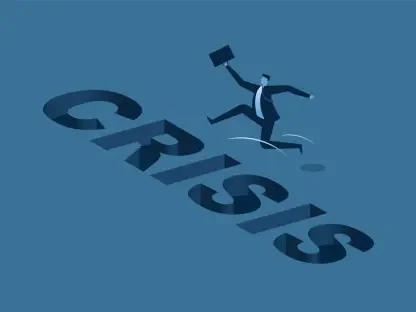Navigating the educational landscape as a teacher of color comes with a unique set of challenges. This article delves into the nuanced experiences of a Black and Puerto Rican math teacher who grapples with the harsh realities of invisibility, identity, and the quest for recognition in a predominantly white educational system.
Invisibility and Identity Crisis
Facing Stereotypes
From the outset, the teacher feels profoundly unseen, much like the protagonist in Ralph Ellison’s “Invisible Man.” Despite his significant roles as a husband, father, and community leader, he is often reduced to racial and physical stereotypes. His identity as a multifaceted individual is overshadowed by preconceived societal notions that pigeonhole him into limiting categories. This reductionist view from colleagues and the educational system relegates him to an existence where his contributions are often overlooked or undervalued. At times, he feels as though his very presence is invisible, his voice muted in the cacophony of institutional biases and stereotypes.
The diminishing effect of these stereotypes is not confined to the professional realm but reverberates in his personal life, creating an identity crisis that challenges his sense of self-worth and purpose. The oppressive nature of these stereotypes forces him into a perennial struggle to assert his identity beyond the superficial labels imposed upon him. The constant need to prove his worthiness as an educator, mentor, and leader does not just drain his energy but also chips away at his self-esteem. It becomes an exhausting cycle where recognition and validation are perpetually out of reach, leaving an indelible impact on his professional and personal life.
The “Child Whisperer” Label
The term “child whisperer” epitomizes his relegation to managing discipline rather than being recognized for his educational expertise. Instead of appreciating his teaching abilities, colleagues and the system focus on his perceived natural ability to control unruly students. This label not only minimizes his professional contributions but also adds an invisible tax—extra, unrecognized labor due to his race. The application of such labels robs him of the opportunity to fully engage in pedagogical innovation and curriculum development, areas where his true interests and talents lie. The dichotomy between his actual abilities and the roles he is pigeonholed into highlights the debilitating impact of stereotypes on his professional growth.
This constant expectation to act as a disciplinarian rather than an educator cements his role as an enforcer rather than a nurturer or intellectual guide. It deters his ability to establish the kind of educational environment he envisions—one that fosters curiosity, creativity, and critical thinking. The emotional and psychological toll of carrying this invisible tax cannot be understated. It contributes to a sense of professional dissatisfaction and personal disillusionment, making every day a struggle to assert his broader value beyond the narrow confines of racial expectations.
Reality vs. Expectations
Initial Hopes and Disillusionment
When the teacher began his career, he envisioned a role filled with leadership and influence. However, the reality quickly diverged from his expectations. He found himself constantly addressing behavioral issues, which limited his capacity to deliver meaningful educational content. This disparity created a simmering sense of frustration and disillusionment. The initial enthusiasm he had for teaching and mentoring was gradually eroded by the incessant disciplinary demands, which overshadowed his ability to engage in substantive educational interactions with his students. His dreams of fostering a nurturing and intellectually stimulating environment took a backseat as he navigated day-to-day behavioral challenges.
This gap between expectation and reality is a glaring symptom of broader systemic issues. While he entered the profession with a desire to inspire and educate, he increasingly found himself in a reactive mode, responding to crises rather than proactively shaping young minds. This mismatch not only stifled his professional growth but also hindered his ability to establish a meaningful connection with his students. The persistent focus on discipline fundamentally altered the dynamics within his classroom, affecting both his teaching efficacy and his emotional well-being.
Systemic Failure in Support
The lack of administrative stability and support exacerbated these challenges. Frequent leadership turnovers and inadequate resources left him feeling unsupported and overwhelmed. Schools with significant populations of students of color were particularly chaotic, reflecting broader systemic inequities that disproportionately affect both educators and students of color. The chaotic environment created by these leadership vacuums adds layers of complexity to an already demanding job, making it exceedingly difficult to implement long-term educational strategies or seek mentorship from experienced colleagues. The absence of a stable leadership structure contributes to a sense of perpetual instability, both in terms of policy and everyday practice.
Moreover, the insufficient support extends beyond administrative leadership to include a lack of essential teaching resources, which further compounds the challenges faced. The systemic neglect that leaves schools under-resourced makes even the fundamental aspects of teaching arduous, draining the enthusiasm and energy that teachers of color bring into the classroom. Despite a heartfelt commitment to the profession, this lack of systemic backing forces many educators into a state of perpetual stress, driving some to question their career paths altogether. The compounding effect of these stressors manifests in emotional exhaustion and a sense of isolation, profoundly impacting their mental health and job satisfaction.
Overcoming Stereotypes
Extra Labor and Recognition
The extra labor expected from him was often unrecognized, further entrenching the sense of invisibility. This invisible tax can be emotionally and mentally exhausting, placing additional burdens on teachers of color while undervaluing their broader contributions. Yet, he continually strives to break free from these limitations, pushing for acknowledgment beyond stereotypical roles. The continuous struggle for recognition is a testament to his resilience and determination, although it often feels like an uphill battle against an entrenched system resistant to change.
This quest for broader acknowledgment reflects a deep-seated need to redefine professional roles and challenge the normative perceptions that confine educators of color. By actively seeking roles that highlight his educational capabilities, such as mentorship programs or involvement in curriculum development, he attempts to dismantle the barriers imposed by systemic biases. These efforts, while met with varying degrees of success, underscore his commitment to transforming the educational landscape not just for himself but for future generations of teachers of color. The continuous endeavor to balance these responsibilities and redefine his professional identity is a testament to his resilience and unwavering dedication to the cause.
Navigating Professional Roles
In attempting to redefine his professional identity, the teacher sought roles that highlighted his educational capabilities. Whether through mentorship or curriculum development, he aimed to demonstrate his multifaceted skills and leadership potential. Despite these efforts, systemic biases often limited his recognition. His contributions, though significant, were frequently overshadowed by the persistent stereotypes and institutional barriers that pervade the educational system. These attempts to assert his value beyond disciplinary roles showed both his resolve and the entrenched challenges of transforming a system rife with biases.
The journey to navigate these professional roles was fraught with obstacles, but it also provided opportunities for personal and professional growth. His involvement in mentorship initiatives, for example, not only allowed him to guide younger educators but also offered a platform to share his experiences and advocate for systemic change. The process of continuously pushing against these boundaries was both exhausting and empowering, a dual reality that many educators of color face. Despite the setbacks, his efforts serve as a beacon of hope and a call for broader systemic reforms to genuinely recognize and leverage the diverse talents of teachers of color.
Struggles with Systemic Support
Early Career Challenges
Moving from graduate school to his first teaching job, the teacher encountered an environment fraught with uncertainty. Leadership changes and a lack of consistent support created a tumultuous setting that placed immense pressure on him. The rapid turnover and chaotic conditions made it difficult to implement consistent educational strategies, adding to his stress and workload. The transition from the theoretical foundations learned in graduate school to the practical challenges of a classroom setting was made even more difficult by the lack of stable mentorship and guidance. This environment of instability forced him to constantly adapt, often without the necessary resources or support systems.
The early challenges of his career were compounded by the realization that the systemic issues he had studied academically were not just theoretical constructs but lived realities. The disconnect between his educational training and the on-ground challenges highlighted the broader systemic failures that disproportionately affect educators of color. This dissonance further strained his emotional and psychological well-being, making it a struggle to reconcile his passion for teaching with the harsh realities of an unsupportive system. The lack of a solid support infrastructure during the formative years of his career set a challenging precedent that continued to influence his professional journey.
The Under-resourced School Dilemma
In under-resourced schools, teachers of color face heightened challenges. The lack of materials, support staff, and administrative guidance can make even the most basic teaching tasks arduous. This environment strains teachers emotionally and physically, often leading to high turnover rates and burnout among educators of color. The continuous struggle to secure basic teaching aids and resources adds an additional layer of complexity to their already demanding roles. The lack of essential support infrastructure not only hampers their ability to deliver quality education but also perpetuates a cycle of frustration and disillusionment.
The dilemma of working in under-resourced schools reflects a broader societal neglect that disproportionately affects communities of color. Despite the intrinsic motivation to uplift and educate, the systemic roadblocks often make it an insurmountable task, contributing to the attrition rates among teachers of color. The emotional toll of working in such environments is compounded by the persistent feeling of being set up for failure, despite one’s best efforts. The resilience required to navigate these challenges is immense, underscoring the critical need for systemic reforms to provide adequate support and resources for educators committed to making a difference in under-resourced communities.
Efforts for Systemic Change
Running for School Board
Motivated to instigate systemic change, the teacher decided to run for a school board position in 2021. Despite initial enthusiasm and community support, the political campaign quickly became a battleground. Personal attacks, misrepresentations, and malicious tactics marred his efforts, underlining the pervasive obstacles facing individuals of color in leadership roles. The campaign process unveiled the deeply entrenched biases and structural hurdles that individuals of color encounter when attempting to ascend to positions of influence and authority. The bitter experience of facing such hostility not only disheartened him but also exposed the persistent resistance to change within the educational system.
Running for a school board was not just a personal ambition but a genuine attempt to influence systemic changes from within. However, the myriad challenges he faced during the campaign highlighted the formidable barriers to entry for people of color in decision-making roles. The personal toll of navigating these adversities was immense, affecting both his mental and emotional well-being. Despite the setbacks, his endeavor illuminated the urgent need for more inclusive and equitable representation within educational leadership. His campaign, though unsuccessful, served as a catalyst to foster conversations about systemic biases and the pressing need for reforms to enable more diverse voices in leadership roles.
Political Backlash and Personal Toll
The campaign’s draining nature revealed the harsh realities of engaging in systemic reform. The teacher’s defeat underscored the entrenched biases within the system, proving that even well-intentioned efforts are often stymied by deep-seated prejudices and power structures resistant to change. The exhausting process of political campaigning took a significant personal toll, leaving him questioning the feasibility of effecting change through traditional channels. The backlash he faced extended beyond political opposition to personal attacks that impinged on his integrity and motivations, further complicating an already arduous journey.
This experience of political engagement exposed him to the broader dynamics of power and privilege that pervade institutional structures. The significant emotional and psychological toll of enduring personal attacks and misrepresentations brought to light the sacrifices required to challenge systemic norms. Despite the fatigue and disillusionment, his efforts were not in vain. They laid the groundwork for future initiatives and inspired others in the community to advocate for change. The resilience and determination he demonstrated underscored the critical role of educators of color in pushing for systemic reforms, even in the face of significant adversities.
Finding Solace in the Classroom
Classroom as a Reflective Space
Despite systemic challenges, the classroom becomes a sanctuary for the teacher. It offers a space for reflection and direct impact, allowing him to connect deeply with his students. His commitment to nurturing young minds becomes a source of personal and professional validation, filling some gaps left by broader systemic failures. The classroom setting offers a rare sense of control and agency, enabling him to implement his pedagogical vision and make a tangible difference in his students’ lives. This environment provides a much-needed respite from the external pressures and challenges, allowing him to focus on what truly matters—educating and inspiring the next generation.
The reflective space of the classroom also serves as a microcosm for broader societal change. Within this environment, he can foster an inclusive and supportive atmosphere that challenges the stereotypes and biases prevalent in the wider educational system. The direct interactions with students provide reciprocal validation, reinforcing his belief in the transformative power of education. Despite the systemic obstacles he faces, the classroom becomes a testament to his resilience and dedication, offering both solace and a sense of purpose.
Resolute Commitment to Students
Navigating the educational landscape as a teacher of color presents a distinct set of challenges that go beyond the typical demands of the profession. This article explores the complex experiences of a Black and Puerto Rican math teacher who confronts the stark realities of invisibility, identity crises, and the ongoing struggle for acknowledgment within a predominantly white educational system.
Teaching in such an environment means constantly battling the feeling of being unseen and underappreciated. The teacher’s unique cultural perspective often goes unnoticed or undervalued, contributing to a sense of isolation. The struggle extends to gaining recognition for their contributions and efforts, which can be overlooked simply because of their racial and ethnic background.
Moreover, this educator faces the dual pressure of serving as a role model for students of color while also navigating expectations from colleagues who may not fully understand or appreciate the added complexities of their position. Balancing personal identity with professional responsibilities becomes a daily challenge.
This scenario highlights the need for systemic changes in educational institutions to foster a more inclusive and appreciative environment. Emphasizing diversity, equity, and providing support for teachers of color can help mitigate these challenges, allowing them to thrive and positively impact their students’ lives.








